 Sly And The Family Stone Catalog Remastered (Review)
Sly And The Family Stone Catalog Remastered (Review)The Begining: A Whole New Thing; Dance To The Music; Life
The handling of Sly And The Family Stone's back catalog over the years has long been a source of heated debate among music fans. The impact of this ground breaking band has never been in doubt however. When the final history of rock and roll is written, Sly And The Family Stone's place in the books is just about as sure a thing as it gets.
From the time they first emerged out of San Francisco in 1967, Sly And The Family Stone began a music revolution that would go on to break down just about every barrier imaginable--be it musical, racial, or even gender based. Over time, Sly And The Family Stone would go on to redefine not just R&B music, but rock and roll as a whole.

Their influence would be felt for decades, and it continues to be felt today on an entire myriad of levels. From the seventies forward, Sly And The Family Stone became the template for artists as diverse as Earth Wind & Fire and George Clinton's various incarnations of P-Funk. The "bass-popping" style--introduced to the world by bassist Larry Graham--would later be adopted as the standard for countless funk and jazz artists from Bootsy Collins to Stanley Clarke.
In the eighties, the multi racial and gender busting makeup--not to mention the sound itself--of Prince's various groups from the Revolution on, could be traced directly to Sly And The Family Stone. As a source for today's sampled hip hop records, Sly And The Family Stone's only real rival is James Brown himself.
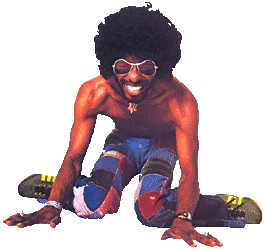
So it was only a matter of time before somebody took upon themselves the formidable task of remastering Sly's back catalog, to finally give this monumental work the proper treatment it so richly deserves.
Sony Legacy's remastered reissues of these landmark recordings are currently scheduled for release on April 24 (although this date has already been moved several times). Each of Sly's original seven album releases will be reissued in newly remastered form, with all of these featuring brand new liner notes, and several never before released bonus tracks. A new multi-disc anthology is also scheduled.
On their debut album, 1967's prophetically titled A Whole New Thing, it becomes apparent from the first few notes of the opening track "Underdog" that this album heralded exactly the "Whole New Thing" it spoke of. Incorporating elements of the sixties psychedelic rock the Bay Area was best known for at the time, Sly and The Family Stone would also foreshadow the big horn based funk of latter day Bay bands like Tower Of Power.

Underlying the stealthy horns however, was the razor tight rhythm section of bassist Graham and drummer Greg Errico. Balancing out the feel good funk-rock, were more blues based jams like "Let Me Hear It From You" (where you can also hear early echoes of Prince tracks like "Darling Nikki"). The bonus tracks here include alt versions of both "Underdog" and "Let Me Hear it From You," as well as several previously unreleased tracks.
By the time of the followup album, Dance To The Music, what was previously San Francisco's worst kept secret were well on their way to becoming a national sensation. The title track became a national top ten single, based on an irresistable hook, but more importantly on the band flexing their musical chops more than ever.
While the horn arrangement is front and center on this classic track, Larry Graham's bass is more prevalent than ever and the band's multi-gender makeup is emphasized in the vocal trade off's between Sly and Sister Rosie. On "Higher," the band offer a preview of the later updated version they would make famous at the Woodstock festival. The reissued version again includes alt versions of these two key tracks, along with several previously unreleased tracks, including a cover of Otis Redding's "I Can't Turn You Loose."
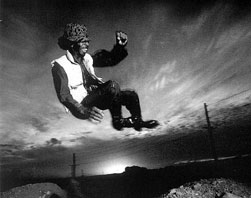
On Sly's third album, Life, released in late 1968, the band further expanded it's sound into rock territory. On tracks like "Dynamite," and "Chicken" there is more of an emphasis on guitar (with a textbook example of what has often been called the "chicken scratch" sound on the latter track). The band also began to expand itself lyrically on this album with tracks like "Jane Is A Groupee" providing a look into the trappings of rock stardom in the sixties, and "Plastic Jim" showing signs of a yet to be fully developed political and social consciousness.
Most importantly, on Life, Sly And The Family Stone were playing more as a unified band than ever. This album in many ways comes closest to capturing the energy of the live performances they were soon to become famous for. Bonus tracks here include an alt version of "Dynamite" and a previously unreleased instrumental called "Sorrow."
So with these three pivotal records--all originally released in just under two years--the world was formally introduced to Sly And The Family Stone, and a firm foundation for one of the greatest bands in modern music history was established.
Nothing however could have predicted the explosion yet to come with Sly And The Family Stone's next two releases.
The Middle: Stand!; There's A Riot Goin' On

By 1969's Woodstock Festival, Sly And The Family Stone's reputation for incendiary live performances had grown to the point where they were regarded by many as the greatest live act on the planet. If there was any doubt whatsoever of this however, it was completely shattered by the band's historic performance at Woodstock.
Looking past Woodstock's images of stoned out hippies dancing naked in the mud that have become forever ingrained into the consciousness of a generation, there are really only a handful of images of the actual musical performances that took place there which have become likewise etched into memory.

Of these, only three were truly star making turns. Santana's electrifying rain chant during "Soul Sacrifice;" Ten Years After's Alvin Lee's blistering, teeth-clenched guitar soloing on "I'm Going Home"; and Sly And The Family Stone's unforgettable, call and response during the medley of "Dance To The Music" and "I Want To Take You Higher." The energy of this performance was absolutely off the charts, and the image of Sly throwing the peace sign in the air with fringe flying, is arguably the most lasting musical snapshot of that historic event.
It was a landmark performance whose way had been thoroughly paved by a landmark album, 1969's Stand!. While many music historians justifyably will point to There's A Riot Goin' On as Sly And The Family Stone's greatest work, my own vote goes to Stand! hands down. Either way you choose to slice it, these two albums represent the creative and artistic peak of Sly And The Family Stone.
But for my money, Stand! is where everything absolutely came together. From the first notes of the opening track, this album just flat out kicks ass and takes names. On a musical level, the band plays as tightly as any musical unit had ever done up to this point and establishes the standard for every single self-respecting funk band which would follow. Not to mention quite a few rock bands as well.

The album's original seven tracks include at least four hit singles: "Everyday People"; "Sing A Simple Song"; "You Can Make It If You Try"; and of course, the band's signature song made famous by it's Woodstock performance, "I Want To Take You Higher." The band was also by now fully incorporating the politics of both the civil rights and anti-war movements into it's lyrics via both "Everyday People" and the racially charged call to empowerment of "Don't Call Me Nigger Whitey."
Rounding out the album, the thirteen plus minutes of the instrumental "Sex Machine" begin with a slowly percolating wah-wah guitar that slowly builds in tension before finally exploding into a cacophonous wall of sound of crashing drums and screaming horns. The final effect is a virtual eargasm of sound (hence the title perhaps).
For my money, Stand! is just about as good as it gets on a purely musical level. On the reissue, the single versions of the title track, "Higher", and "You Can Make It If You Try" are included along with two previously unreleased tracks.
In between Stand! and Riot, Sly And The Family Stone released two more big hit singles in the form of "Hot Fun In The Summertime" and "Thank You (Falettinme Be Mice Elf Agin). So I guess we know now where Prince gets his penchant for oddly spelled song titles from.

There's A Riot Goin On was widely regarded at the time as Sly And The Family Stone's big "political statement" album (and the American flag imagery of the album art did little to dispell this notion).
And while the album was his most experimental to date, the sad truth was that the stardom of Stand! had already begun to take a personal toll on Sly Stone himself. On tracks like "Luv N' Haight" the band perks along sounding as tight as ever, but there is a disjointed feel to this album that stands in stark contrast to the undeniable musical unity of Stand!.
Riot does have it's share of political themes such as on "Africa Talks To You (The Asphalt Jungle)". And there are a number of musically interesting things on the album, even if most of them seem to come in fragments, something which could never have even been imagined on the tightness that is the Stand! album. The song "Poet" for instance features an interesting bass and keyboard based riff that I would bet you dollars to donuts inspired Chaka Khan and Rufus' "Tell Me Something Good."
The reissued version of Riot's bonus tracks are mainly untitled instrumentals, which perhaps represent Sly's apparently scattered state of mind at the time.
For my money, Riot is probably Sly's most interesting and musically intriguing album all these years later. It is most certainly the one which most stands out as having the sort of depth which is benefited best by repeated listenings. Riot's lone hit single, "Family Affair" also stands up nicely next to other hits like "Everyday People."

But it lands nowhere near the knockout punch of it's predecessor Stand!.
It was also quite clear that the drugs had begun to take effect.
The End: Fresh; Small Talk
The seventies were not nearly as good to Sly and The Family Stone, and particularly to Sly himself, as the sixties had been.
The legacy of course continued to live well on in the form of bands like Earth Wind & Fire and Parliament-Funkadelic. But as for Sly And The Family Stone itself, by the early seventies the wheels were pretty clearly begining to come off of the wagon.

A couple of years had lapsed between the release of There's A Riot Goin' On and 1973's Fresh. And despite it's cover art of an apparently exuberant Sly jumping for joy, there was clearly trouble in paradise. Most distressingly, Sly and The Family Stone's reputation as rock's greatest live band had been replaced by Sly's new-found reputation for showing up late or not at all to scheduled performances.
In all of music at the time, this was a reputation for no-showing scheduled concerts rivaled only by country music's famously late George "No Show" Jones. I actually have my own rather bizarre experience with this to relate.
As a then fourteen year old music freak, I had already seen many of my heroes--from the Airplane to Jimi Hendrix to Janis Joplin--in concert, and desperately wanted to see Sly. So I was downtown on the day of Sly's show at the Paramount without a ticket and trying to figure out a way in, when I ran across this rehab group for heroin addicts called "Methadone Now". After a brief discussion with the guy in charge, I learned they would have a booth in the lobby of the concert soliciting donations and that if I wanted to work the booth, I could get in for free.

Imagine my luck.
The problem was I never told my parents. So after working the booth during the opening act (a stand up comedian of all things), I patiently waited for Sly to show up. And waited. And waited. And waited.
By this time it was well past midnight with no sign of Sly, and my parents (who you remember I failed to inform where I was) had understandably become concerned. So they called a friend of mine who informed them I was downtown working a drug rehab booth at the Paramount.
So, at about 12:30 AM, I was escorted out of the Paramount by a uniformed police officer. And I can honestly say I was never so embarrassed in my life. From what I understand, Sly finally showed up about an hour later and did a thirty minute set with no encore.
So much for my last chance to see the great Sly Stone.

Listening to the album Fresh now as I write this, I can tell you that the album has it's moments like on the song "Skin I'm In." The band sounds as good as ever. But the songs themselves have nothing remotely approaching the creative and energetic spark of something like "I Want To Take You Higher." The bonus tracks included on the remastered version consist mainly of alt versions of songs who even in their original versions constitute the dying gasps of a once genius-level songwriter.
The cover of Sly's last official album Small Talk rather famously features Sly and his wife (at least I'm assuming) holding up his baby boy. Supposedly by this time Sly had somewhat rehabilatated himself. The music on this album however does not evidence this at all. Rather, it is more of the experimental meanderings which began (interestingly) with There's A Riot Going On and climaxed (much less so) with the relative mess of Fresh.

Again, this album is mainly characterized by little bits and pieces that, while musically interesting at times, far more often serve as frustrating and unfortunate reminders of the greatness that once was Sly And The Family Stone.
And don't get me wrong here. Fragments are fine. Especially if there are enough of them that are interesting enough to sustain an entire album--such as is the case with eighties hip hop artists clearly inspired by Sly Stone like De La Soul and Public Enemy.
But by the time of Small Talk, it was pretty clear that Sly had run completely out of gas. Sly was for all intents and purposes done.
There have of course been rumors off and on over the past thirty years or so of a comeback. And for an old fan like me, his appearance at the Grammys two years ago was very encouraging.

Whether anything comes of it of course remains to be seen.
But if Brian Wilson can come back from the dead, I suppose anybody can. One can only hope.




 What happened was we originally were with EMI, and then we were with some independent labels and we weren't really happy. So it just came around to how about we do the internet pre-order thing? We sent an e-mail out to all our fan base and said "what do you think?" And the response was really pretty huge. Something like 14,000 people actually ordered the album, which gave us a big bag cash of something like 400,000 pounds. It paid for the whole record--the recording and the manufacturing. From that point on, we did it again with the Marbles album, and that worked as well. So all the time, we've been building up a fan database. Its an artist's dream come true to have the freedom and the trust of the fans. We're very fortunate.
What happened was we originally were with EMI, and then we were with some independent labels and we weren't really happy. So it just came around to how about we do the internet pre-order thing? We sent an e-mail out to all our fan base and said "what do you think?" And the response was really pretty huge. Something like 14,000 people actually ordered the album, which gave us a big bag cash of something like 400,000 pounds. It paid for the whole record--the recording and the manufacturing. From that point on, we did it again with the Marbles album, and that worked as well. So all the time, we've been building up a fan database. Its an artist's dream come true to have the freedom and the trust of the fans. We're very fortunate. r the next one. That one is coming out in 2008, right?
r the next one. That one is coming out in 2008, right?
 So he's getting married in August and I'm going and so is Mark (Kelly, the band's keyboardist), so that should be fun. I don't know if he's mellowed, but I should think he's mellowed a little. We're all getting older and we have to or else you just die. We had a lot of very good times together and I tend to just remember the good times and forget about the drama. Last year, he went out and did a whole tour of the Misplaced Childhood album and I think this year he's going out and doing the Clutching At Straws album.
So he's getting married in August and I'm going and so is Mark (Kelly, the band's keyboardist), so that should be fun. I don't know if he's mellowed, but I should think he's mellowed a little. We're all getting older and we have to or else you just die. We had a lot of very good times together and I tend to just remember the good times and forget about the drama. Last year, he went out and did a whole tour of the Misplaced Childhood album and I think this year he's going out and doing the Clutching At Straws album.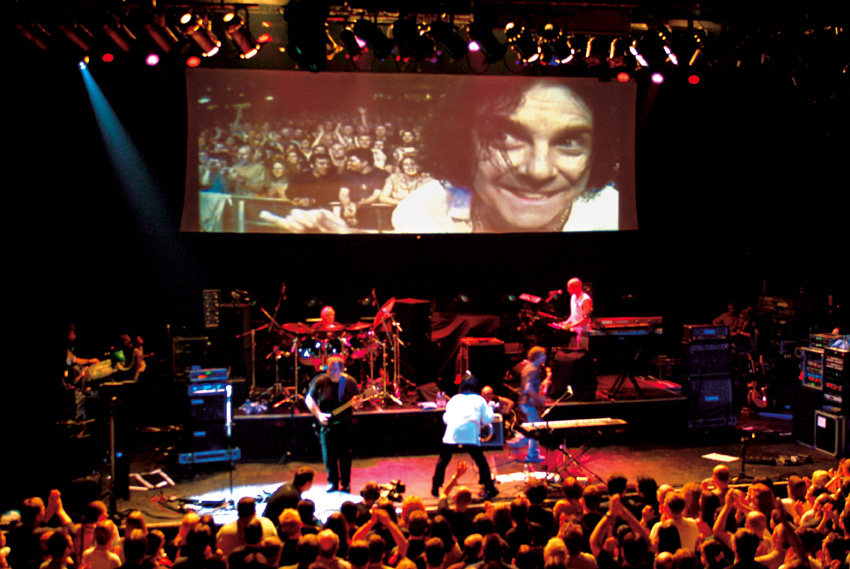


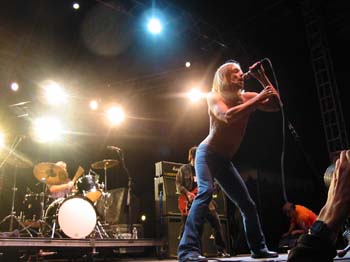









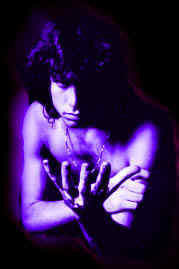
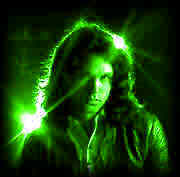







 So it was only a matter of time before somebody took upon themselves the formidable task of remastering Sly's back catalog, to finally give this monumental work the proper treatment it so richly deserves.
So it was only a matter of time before somebody took upon themselves the formidable task of remastering Sly's back catalog, to finally give this monumental work the proper treatment it so richly deserves.






 A couple of years had lapsed between the release of There's A Riot Goin' On and 1973's Fresh. And despite it's cover art of an apparently exuberant Sly jumping for joy, there was clearly trouble in paradise. Most distressingly, Sly and The Family Stone's reputation as rock's greatest live band had been replaced by Sly's new-found reputation for showing up late or not at all to scheduled performances.
A couple of years had lapsed between the release of There's A Riot Goin' On and 1973's Fresh. And despite it's cover art of an apparently exuberant Sly jumping for joy, there was clearly trouble in paradise. Most distressingly, Sly and The Family Stone's reputation as rock's greatest live band had been replaced by Sly's new-found reputation for showing up late or not at all to scheduled performances.

 Again, this album is mainly characterized by little bits and pieces that, while musically interesting at times, far more often serve as frustrating and unfortunate reminders of the greatness that once was Sly And The Family Stone.
Again, this album is mainly characterized by little bits and pieces that, while musically interesting at times, far more often serve as frustrating and unfortunate reminders of the greatness that once was Sly And The Family Stone.





